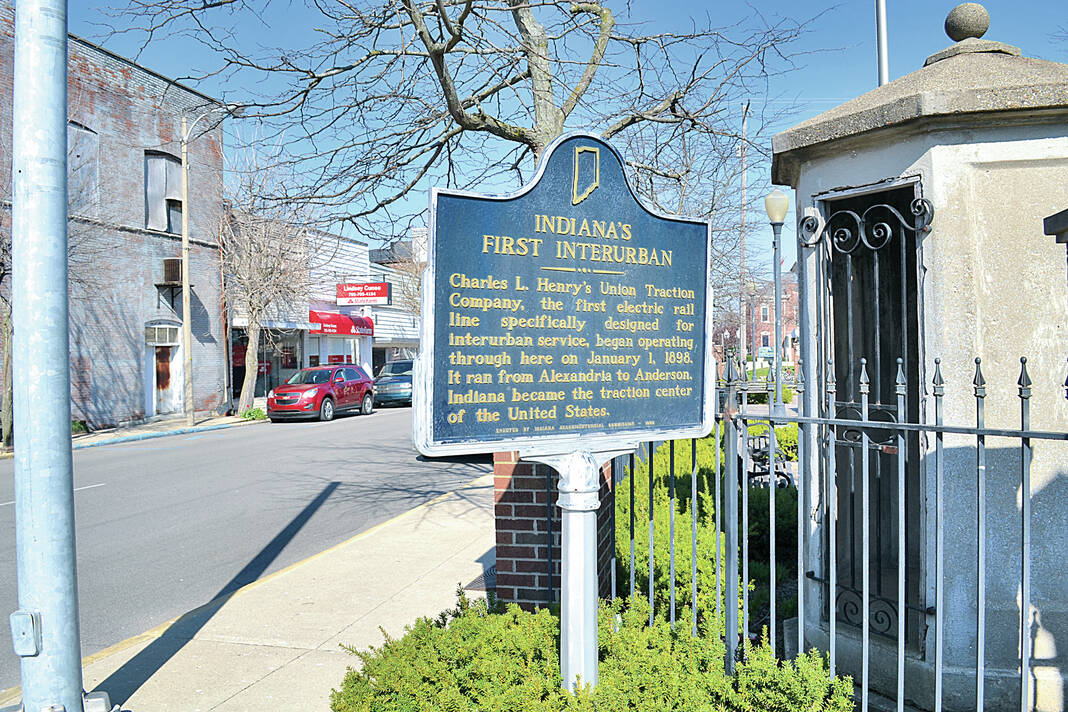
Stephen Jackson

By Stephen Jackson | For The Times-Post
Monroe Township, originally part of Richland Township, was separated when it was formally organized on Jan. 5, 1836.
Upon organization, Monroe became the largest township in Madison County, a distinction it continues to hold.
Included in its original survey was the present Van Buren Township and the eastern half of Boone Township, plus all of its present 51 square miles.
Since the arrival of the first settler, it had taken less than five years for the population to be considered sufficient to justify the organization of the county’s ninth township.
Settlement first occurred during the spring of 1831 when Micajah Chamness from North Carolina made the first land entry.
The land he entered now lies within the corporate limits of Alexandria.
His cabin was the first to be erected in the township.
A boulder with a plaque dated 1931 was placed there by the Madison County Historical Society to commemorate the passing of 100 years and marks the once remote cabin.
Today, a busy Indiana State Road 9 passes nearby.
Settlement in and around this area quickly followed by pioneers, mainly from North Carolina and Ohio, who were aided by the opening of two public roads in 1830.
One was the Indianapolis and Fort Wayne road and the other was the road from Fort Wayne to Shelbyville.
The two formed a junction near the northern boundary of the present township.
Over them, early mails were carried, which served as a stimulus to the prospective settler.
The former road no longer exists as it was replaced many years later when Indiana State Road 37 was built farther west.
The later road still exists in the presence of Indiana State Road 9.
The Commissioners’ Court designated the name for the township honoring James Monroe, the sixth president of the United States.
It would be the second of three county townships bearing a president’s name.
One other mode of transportation would exercise an influence over how the township developed.
The planned construction of the Indiana Central Canal which was authorized when the Indiana Mammoth Internal Improvement Act became law in 1836.
In the spring of 1836, William Conner and John D. Stephenson, believing the Central Canal would be located through there, authorized Colonel Nineveh Berry to purchase from Micajah Chamness the east half of the northeast quarter of Sections 24, with a view of laying out a town.
The colonel, being county surveyor, proceeded on June 3, 1836, to lay out a town.
The site was well chosen as it was situated on an elevated piece of ground on the north side of Pipe Creek.
On the following day, a sale of lots was held varying in price from $10 to $53.
Colonel Berry proceeded at once to erect a log cabin on the southeast corner of Harrison and Berry streets, in which he, as the agent of Conner & Stephenson, opened a general merchandise store.
This was in fall 1836, and was the first store in Monroe Township.
The new town was given the name Alexandria, by whom and why was never determined.
For years speculation had it named for the great city of Alexandria in Egypt and it was that same thought process that led to the erection years ago of an old signboard south of town along the highway that proclaimed “Alexandria: Not on the Nile But Just as Worthwhile.”
But, where did it come from?
In 1927, the Alexandria Chamber of Commerce sponsored a contest for a slogan to be used on the big sign boards around the city and on the official stationary of the Chamber.
They selected the slogan submitted by Mrs. Anna Vernon of Pendleton who won the $3 first prize.
In all there were more than a hundred slogans submitted.
Second place was submitted by Mrs. Harry Beardsley which read “Activity Is Our Asset: This Is No Sleepy Hollow.”
The arrival of two railroads, both around 1876, provided an economic stimulus to Alexandria as each one made Alexandria a stop complete with a depot.
One, the Cincinnati, Wabash & Michigan, was laid on a north-south axis, while the other, the Lafayette, Muncie & Bloomington was on an east-west axis.
They crisscrossed, as their successor’s modern-day routes still do, on the near southwest side of Alexandria.
Those railroads proved to be one the major reasons why so many future industries located there.
The arrival of the railroads brought another change.
As the population grew the need for a governing process to provide for its citizens grew and Alexandria was incorporated in the summer of 1876.
The other major reason why businesses chose to locate there lay beneath the ground upon which Alexandria stood.
Spurred by the discovery of natural gas March 27, 1887, the first discovery of natural gas in Madison County and all the new business it brought, resulted in the town of Alexandria being incorporated as a city in 1893.
The great discovery was made on March 27, 1887, in well No. 1, of the Alexandra Mining and Exploring Co., located near the end of East Washington Street.
People came by the thousands to see “the wonder of the 19th century.”
Being well located, Alexandria attracted a great many businesses. By 1897, among the many were:
• Alexandria Window Glass Company – 72 employees
• Lippincott Chimney Works – 650 employees
• Indiana Brick Works – 50 employees
• Depauw Plate Glass Works – 800 employees
• Depauw Window Glass Works – 800 employees
• Kelly Axe Manufacturing – 400 employees
• Union Steel Company – 1,600 to 2,000 employees
Fifty years later it was recognized for the special place it had become, earning the city an unusual place name.
Madison County Historian Stephen Jackson is leading a series of “First Sunday” presentations covering the History of Madison County townships. The talks are set for 2 p.m. on the first Sunday each month in the Bowman Room at Museum of Madison County History, 11 W. 11th St., Anderson. The talks began Sept. 4 and run through Nov. 5, 2023. The information he prepares for those presentations form the basis of this series of columns in The Times-Post.